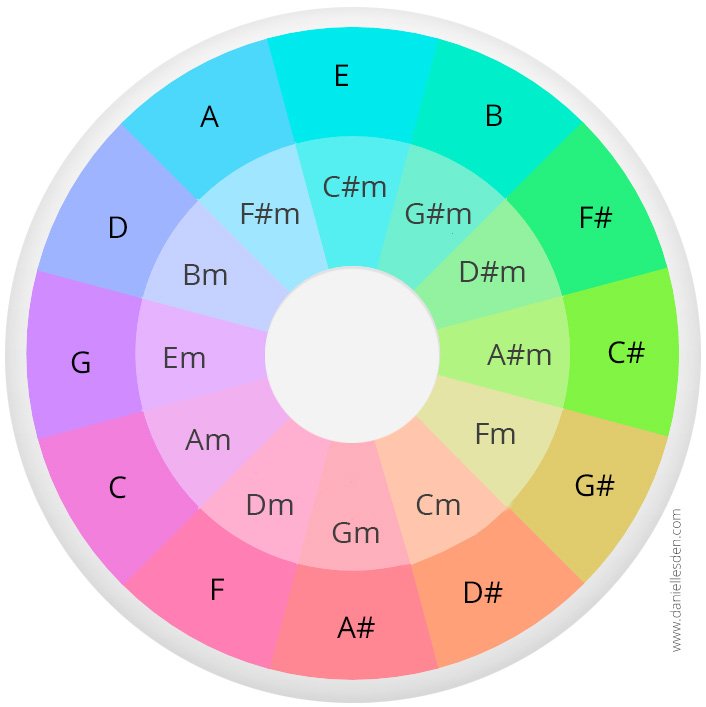Rhythm structure basics
Hi Daniel! Please tell us something about the structure of rhythm. I’m just getting started into music production and learning how to build up rhythms, in psytrance music in particular. Do you use some techniques to set drums properly? Or leads? Can you give some tips?
Sebastian Howard
Sebastian, the best advice I can give is to listen to a lot of music, and listen closely to how other artists do this job. Don’t stick to only one genre you like, in fact, you can learn a lot from other genres too. By the way, there is no big difference between the rhythm structure of Psytrance and other genres, like House, for instance, you’ll see why in examples down below.
Answering straight to your question, yes, I use some methods (or concepts) to build a rhythmic structure of the tracks. Here they are:
- Fill the gaps
- Note different patterns
- Let it breath
Let’s go through each of them.
Fill the gaps
In electronic dance music, all descendant genres that came out of House use a four-on-the-floor rhythm pattern, which is four kick drums per bar. So let’s start with the kicks.

Okay, we’ve got the foundation of the rhythm. To build up the rest, I use a method that I call “fill the gaps”. The biggest and obvious gaps are in between every kick drum, the offbeats. Typically offbeat is a place for open high hats. I gonna put shakers instead, they occupy nearly the same high-end frequencies and sound thinner, I like it.
Usually, I don’t do this, but for this particular example I gonna use a Drum machine in Ableton rather than separate Simplers, so you can see all MIDI notes in a single clip:

Still plenty of room. Now I gonna put closed hi-hats on every sixteenth note, and then I’ll add the classic backbeat — the 2nd and the 4th beats that are typically played by a snare drum. This is how it looks and sounds so far:

We’re doing fine, but this loop doesn’t have any time indicators, it’s easy to get lost if you play it on repeat. Let’s add a crash cymbal at the begging as a time stamp. In live music, a crash cymbal is used to indicate the beginning of a new section, chorus, and verse, while in electronic music is often placed every 16 bars.
Also, I gonna extend this loop up to four bars, so we will have more space to play with. And to bring extra diversity, I’ll add low tom by the end of the first bar, and then an extra snare hit by the end of the second bar.

Now I really want to put something in the first half of every bar, probably a mid-range tom. And we need to emphasize the backbeat since I used a pretty short clap instead of a snare drum, so I think I’ll put an extra layer of claps on top of that.

This already sounds like a solid groove. But for the peak climax moments, we can go even further and add ride cymbals to emphasize the offbeat:

Finally, let’s put this groove into the context of quick arrangement, so we can get feelings of a real-world scenario of usage:
Note different patterns
Do only drums define the rhythm pattern of the track? The answer is no. In fact, pretty much every sound can add a groove to your track. Rhythm can be made of stabs, leads, vocals, or effects, and all these elements can bring a nice diversity to your track.
Below is an example of a rhythm driven by a melodic pattern. Watch closely how later another melodic layer pops in, and it changes the perception of the rhythmic pattern of the track:
One more similar example. In this case, the groove is totally made of melody and bassline synergy. And again, later on, another melodic layer comes into play, which fills the gaps.
Next track I’d like to show a pretty typical groove made of bass and drums, but what’s cool here is an accent on the backbeat in the form of a vocal on top of the snare drum. Yet again, you can find such a pattern from Techno to Psytrance:
Talking about vocals, in Genesis I used the gate effect on a vocal sample to give extra driving rhythm after the breakdown, keep in mind that trick:
At these tracks, the groove is driven by offbeat sound, which repeats half fewer times — only between 1st—2nd, and 3rd—4th beats:
In uptempo Psytrance music, rhythm often is based on the “dialogue” of stabs, leads, and effects:
Let it breath
Having an empty space in the track is no less important than anything else. The first principle I explained above doesn’t mean you have to fill all possible gaps, let it breathe.
This one is probably the most difficult part because the balance is very thin: if the track is too empty, it will be monotonous and boring, if too dense — oversaturated and flat.
A good track must “breathe”. Empty and filled space on a track is like breathing and exhaling, like yin and yang, like Tom and Jerry are so different but necessary for each other.
Here are some examples of how the elements in the track “breathe”, forming a nice groove together:
I hope it helps.



